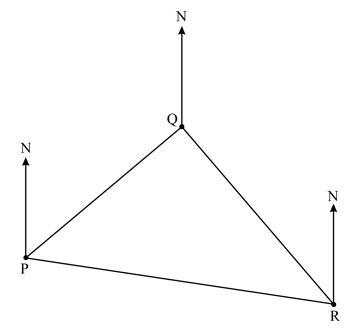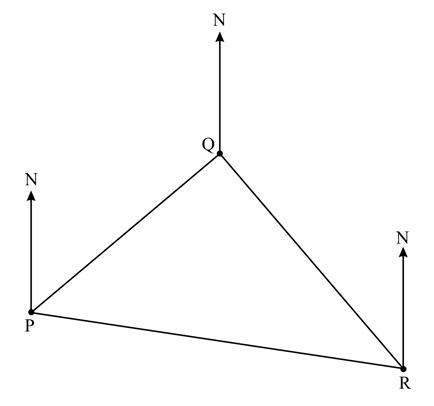Michele Conway, Belle Cottingham, Alastair Duncombe and, Amanda George Solutions for Exercise 3: Exercise 1
Michele Conway Mathematics Solutions for Exercise - Michele Conway, Belle Cottingham, Alastair Duncombe and, Amanda George Solutions for Exercise 3: Exercise 1
Attempt the free practice questions from Exercise 3: Exercise 1 with hints and solutions to strengthen your understanding. Cambridge Lower Secondary Maths Stage 9: Student's Book solutions are prepared by Experienced Embibe Experts.
Questions from Michele Conway, Belle Cottingham, Alastair Duncombe and, Amanda George Solutions for Exercise 3: Exercise 1 with Hints & Solutions
Draw a point O near the centre of a clean page. Draw lines long from the point O to show the direction of the following bearings (you will need to draw the north line at O and label the lines with the letter for the part of the question):

Draw a point O near the centre of a clean page. Draw lines long from the point O to show the direction of the following bearings (you will need to draw the north line at O and label the lines with the letter for the part of the question):

A boat sails from the end of the pier, P, to a buoy, Q, and to a second buoy, R, and then back to P. A scale diagram of the journey is shown. Using your protractor measure: The bearing of Q from P.

A boat sails from the end of the pier, P, to a buoy, Q, and to a second buoy, R, and then back to P. A scale diagram of the journey is shown. Using your protractor measure: The bearing of R from P.
\
A boat sails from the end of the pier, P, to a buoy, Q, and to a second buoy, R, and then back to P. A scale diagram of the journey is shown. Using your protractor measure: The bearing of R from Q.

A boat sails from the end of the pier, P, to a buoy, Q, and to a second buoy, R, and then back to P. A scale diagram of the journey is shown. Using your protractor measure: The bearing of Q from R.

Jana and Alice look diagram below. Jana says that the bearing of P from R looks to be about as it is a bit more than three right angles. Alice says it looks more like as it is almost . Explain which of them is more likely to be correct and explain the mistake that the other one has made.

The bearing of P from Q is . What is the bearing of Q from P?
